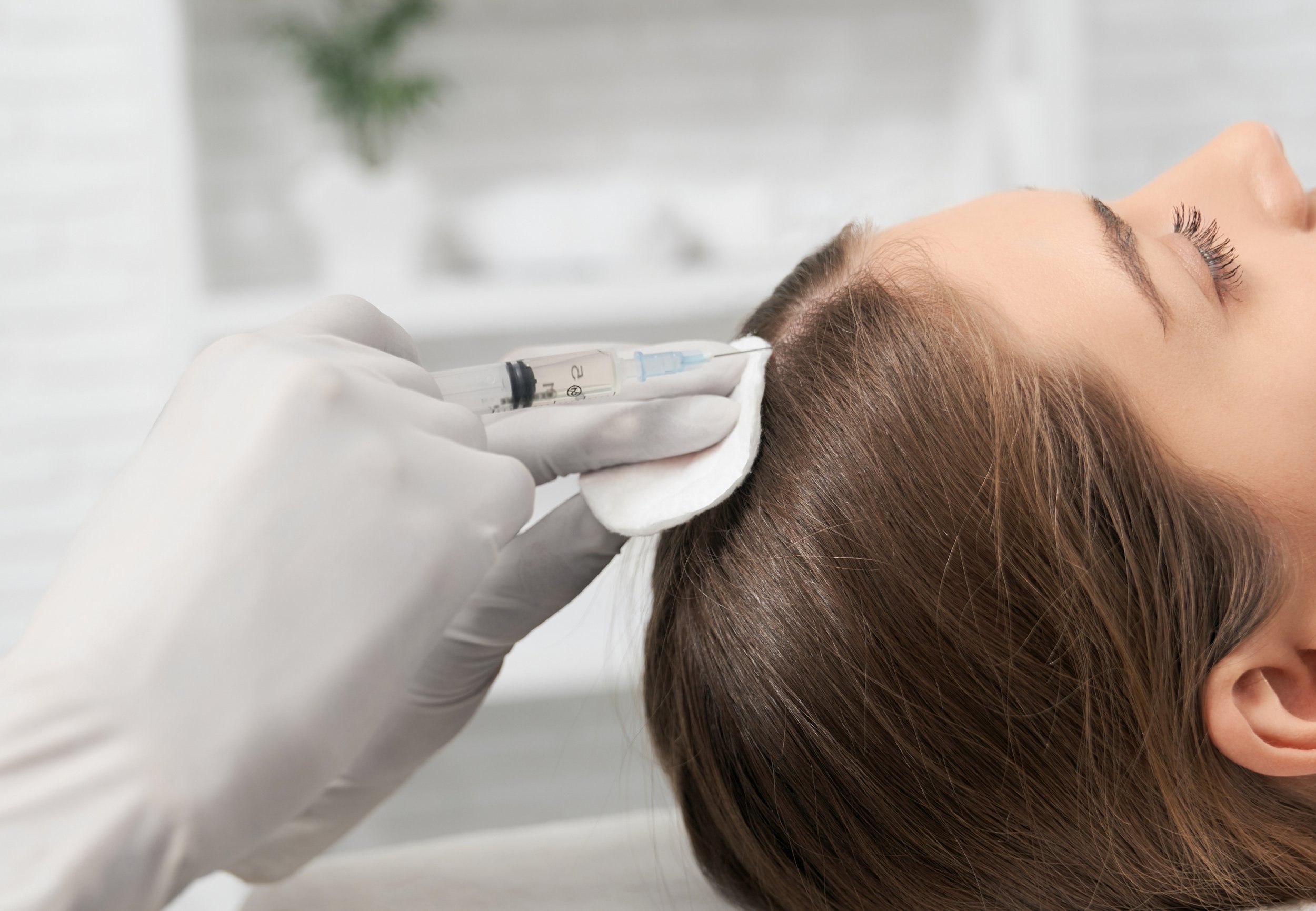
PRP Hair Restoration
Platelet Rich Plasma
PRP (Platelet Rich Plasma) therapy is an exciting therapeutic approach to hair restoration. It causes hair follicles to grow by stimulating cells in the targeted area—promoting healing, accelerating the rate and degree of tissue regeneration, and forming new cell growth. This allows inactive or newly implanted hair follicles to enter an active growth phase, leading to fuller hair in the treatment area. Anyone experiencing hair loss can be a good candidate for PRP treatments, with the best results being seen in patients at the early stages of hair loss.
-
PRP (platelet-rich plasma) is a non-surgical treatment can stimulate the growth of fuller, thicker hair while slowing down genetic hair loss. PRP injections are an essential choice for those who desire a quick, safe, and effective enhancement of their appearance.
PRP is rich in growth factors that bind with hair follicles and stimulate them to grow healthy hair. Growth factors also nourish the hair follicles by increasing blood flow and stimulates even inactive hair follicles.
Blood is drawn and spun in a centrifuge which separates your red blood cells from your platelet rich plasma. The plasma is then injected into the scalp to help restore hair loss.
-
PRP therapy works best for patients with early signs of hair loss. It’s simply easier to stimulate hair follicles that have only been dormant for a short period of time. Hair that has been lost for over 3 years may not grow back, as PRP works best in the early stages of hair loss.
Please inform me of any history of bleeding disorders or autoimmune disease, as these conditions may impact your candidacy. Other factors such as smoking and an unhealthy lifestyle may also impact results.
PRP treatment is considered very safe for most people, but not recommended for patients with medical conditions affecting platelet production, as treatment won’t yield the desired results.
PRP is also not advised for those with Hepatitis C, HIV or AIDS, blood cancer or cancers of the skin in the target treatment area, or cardiovascular disease, which requires the use of blood thinners. Patients who are pregnant, nursing, or breastfeeding are also not candidates for PRP treatments.
-
PRP injections are described as minimally to moderately painful. Injections are administered quickly using the smallest possible needle to decrease discomfort.
-
PRP hair restoration uses a non-surgical injection process that requires zero downtime. Treated areas of the scalp may appear inflamed. Some patients may experience tenderness or irritation at the injection site. However, these side effects should resolve quickly. Patients are expected to be able to return to normal activities immediately after treatment.
-
Patients should expect to be treated monthly for the first 3-4 months, and then every 4-6 months for ongoing maintenance.
Age, genetics, and the amount of hair loss you experience will influence a single treatment’s longevity. Typically progress can be seen for up to 6 months after treatment.
-
Progress should be seen within several weeks of your initial treatment, although PRP hair restoration may take between four and six months to see measurable results. Individual results may vary.
-
Avoid exercising, saunas, steam rooms, and sun exposure for 24 hours after treatment. It is okay to take a warm (not hot) shower after treatment. Shampooing and hair products should be avoided for at least 24 hours. Hats may be worn.


